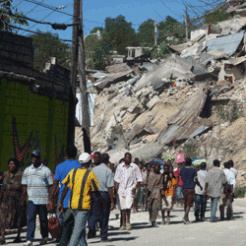Last week, in the wake of the Haiti tragedy, I talked about how I felt that non-emergency charities should continue doing what they were already doing.
I've been chatting to lots of colleagues about charities' response to Haiti this week and the message has been the same - speed is key. In other words, getting to donors, prospects, the general public quickly is critical to maximising support.
The same applies in the wash-up from disasters, of which Haiti is no exception.
We just finished some testing for one of our Canadian clients at Pareto Fundraising. We tested different approaches to disaster donors, trying to determine the optimum way to get a second gift, ideally a monthly gift.
The upshot was, the sooner we get back to people the more likely they are to commit to a subsequent gift. Hardly surprising, but the difference was significant. We were twice as likely to get someone to commence a monthly gift whose first gift was within the last 12 months, versus someone whose gift was within the previous 24 months. In fact if we got back within 12 months we could break even well inside a year.
The point is, however, that we should be testing number of weeks after first gift to convert, not years. Fortunately for this client, we have developed a control pack that can be sent to disaster donors, including Haiti supporters, weeks after their first commitment. And that's when you start to see this program maximise its impact.
Being prepared, ready to go to supporters within weeks is absolutely crucial to conversion efforts. And disasters happen, so there is no excuse for not having conversion plans.
I was going to write some more on post-disaster follow-up, but my colleague Sean Triner has written a great piece called Cashing in on disaster donors that is worth a few minutes of your time to read.
Disaster preparedness and conversion
19 Jan 2010
Voices
Last week, in the wake of the Haiti tragedy, I talked about how I felt that non-emergency charities should continue doing what they were already doing.









